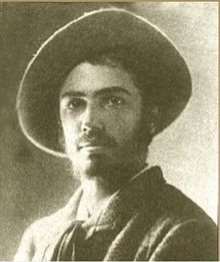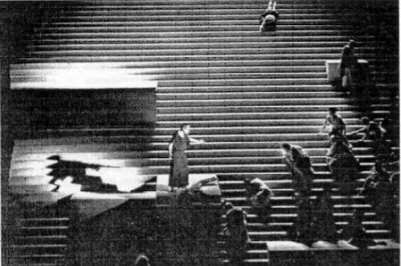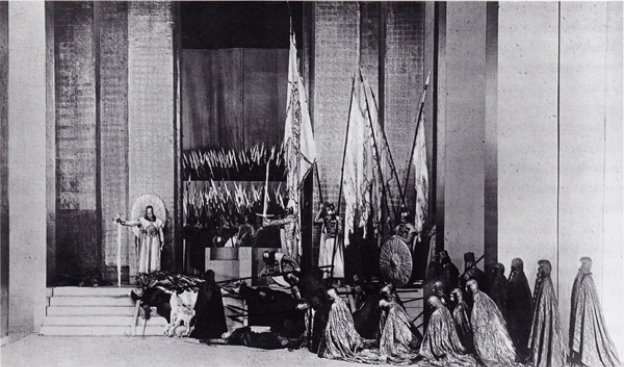Adolphe Appia and Edward Gordon Craig
| ✅ Paper Type: Free Essay | ✅ Subject: Theatre |
| ✅ Wordcount: 1173 words | ✅ Published: 07 Sep 2017 |
Adolphe Appia and Edward Gordon Craig never collaborated with each other in work or spent any significant time in each other’s company, but their names are linked together before they had met or corresponded and have remained so to this day. Appia and Craig worked independently of each other to lay the foundation of modern three dimensional theatre practices.
Adolphe Appia
Adolphe Appia (1862-1928), was a Swiss lighting design innovator who saw the possibility of using light during scenic changes and with striking special effects. Appia was the first to develop and use multi-directional colored lighting to paint the stage and move in harmony with the theatrical production (Brockett 78). Adolphe Appia believed that light was a medium capable of conveying both external and internal meanings. Appia observed contemporary theatre and thought that most productions failed to use light and its potential to serve a production. The newly introduced electrical lighting was utilized with a dull notion of how light can work and appeared exceptionally bright, which destroyed any sense of dimensions and depth.
Appia began to study light and plotted a detailed course to follow in order for light to become a set of principles underlying and guiding the medium. With this concept in mind, he theorized that “light must break away from its enslavement to painted scenery” (Beacham 25). Appia stated that “an object lit from three or four directions throw no shadows” (Beachman 25). Appia then decided that light did not support the expressiveness of music nor did it properly emphasize the plastic, three dimensional, form of the actor and the setting (Beachman 24).
Appia discovered that in order to enhance the setting and create a three dimensional look, he first had to identify two types of light and then use them. The first type is diffused light, which provides a layer of light to enhance the more suggestive lighting effects. The second type of light was active, which highlighted what it lit; providing the means for enhancing both the external and inner settings as well. Active light allows the night, be it the moon or torches shining, or the supernatural to be expressed. Diffused and active lighting are used simultaneously, however, only in terms of the intensity. Appia discovered that to avoid extreme shadows, which weakens the effect of active light; diffused lighting can illuminate the setting and the actor. When visibility on stage and shadows are suppressed, active lighting can be used to enable a more dimensional atmosphere. Using these two types of lighting, Appia began to define the shapes and objects on stage, thus enhancing the three dimensional plastic form and transformed the idea of plasticity with light on stage (Beachman 26).
As part of an exploration of this idea, Appia applied his theory to a stage that did not have true three dimensions. He developed the use of lighting in four forms: 1) the fixed border lights illuminated the painted flats. 2) Footlights were used to light the set and actor from both front and below. 3) Moveable spotlights focused a precise beam or various projections. 4) Light from behind to create a transparent illusion. Appia did find it most difficult to harmonize all of the forms together. His findings of how to use multiple light effects enabled him to manipulate the apparatuses of the time as well as to progress into the future (Beachman 27).
Appia then began to realize that light could also give a sense of time, emotion and dimension (Beachman 62). He began intertwining light and music and time. By this he established the convention of light moving (while in sync with the music) and capturing the audience’s attention (Brockett 142). As he continued to apply and adapt his own theory to theatrical festivals he designed and/or collaborated with, Appia concludes:
“Light, just like the actor, must become active…Light has an almost miraculous flexibility…it can create shadows, make them living, and spread the harmony of their vibrations in space just as music does. In light we possess a most powerful means of expression.”
Appia conceptualized ahead of his time; he theorized that by having more mobile and easily handled apparatuses will produce active lighting, but would also require further study to perfect their operation. The diffused light would require more fixed installations in order to complement big screens of transparency (Beachman 28). Appia was highly influential in the theatre arts and continued his theories with other theatrical theorists as well as working with Edward Gordon Craig to further develop the idea of complete plasticity through light.
Edward Gordon Craig
Edward Gordon Craig (1872-1966), was an English stage design innovator who defined stage lighting for the modern theatre. He believed that the theatre should be free from dependency on realism and the actor. The actor along with light as a key element should be controlled by one person, the master artist known as the director today. Unlike Adolphe Appia, Craig thought that the theatre only needed one master artist to create all of the production elements and focused on lighting as a general illumination for the whole composition (Brockett 146).
Craig’s focus on scenic design began to take a more prominent role and lighting became only an afterthought; for which all of his sets and actors were visible to the audience. He achieved this by using border lights, wing strip lights and footlights (Pilbrow 3). With Craig focusing more on the overall visual impact of coordination and balance between light movement, objects and special relationships, he found himself strongly in disagreement with Appia’s theory that the actor’s body movement was more significant to be considered above all other elements (Beachman 68). Appia took a deep interest as to why Craig disagreed, so he corresponded with Craig, discussing ideas and concerns.
Through this collaboration Craig and Appia combined their ideas into one theory: creating complete plasticity with light. They were to present the Plasticity Theory at the Cologne Exhibit of 1913. However, their first meeting in person was an acrimonious one and Craig refused to present. Frustrated with Appia’s constant focus on the human body and music, Craig voiced his opinion rather sternly: “I told him that for me, the human body in movement seemed to signify less and less and that his vision was clouded by the veils of music and the human form” (Beachman 69). Appia refused to present without Craig and after much discussion, they were able to set aside their differences and presented the Appia and Craig Theory of Plasticity at the Cologne Exhibit on May 19, 1913 (Beachman 70).
Both Edward Gordon Craig and Adolphe Appia were the innovators of modern stage lighting; their ability to think beyond the technology available at the time, has paved the way to lighting design today.
Bibliography
Beachman, Richard. Adolphe Appia: Artist and Visionary of the Modern Theatre. Hardwood Academic Publishers: Great Britain, 1994.
Brockett, Oscar G. and Hildy. History of Theatre. Allyn & Bacon: USA, 2007.
Pilbrow, Richard. Stage Lighting Design: The Art, The Craft, The Life. Design Press: New York, 1997.
 Adolphe Appia
Adolphe Appia
 Lighting effects
Lighting effects
 Three dimensional effects
Three dimensional effects


Edward Gordon Craig The Mask: Lighting effects

Scale effects
Cite This Work
To export a reference to this article please select a referencing stye below:
Related Services
View allDMCA / Removal Request
If you are the original writer of this essay and no longer wish to have your work published on UKEssays.com then please click the following link to email our support team:
Request essay removal


